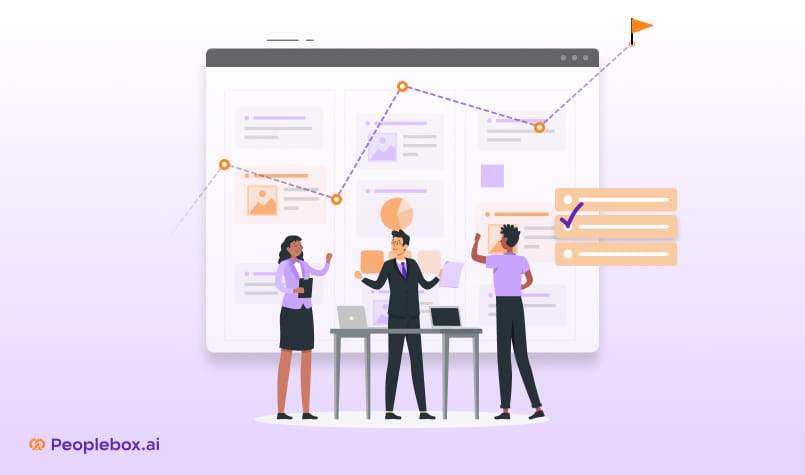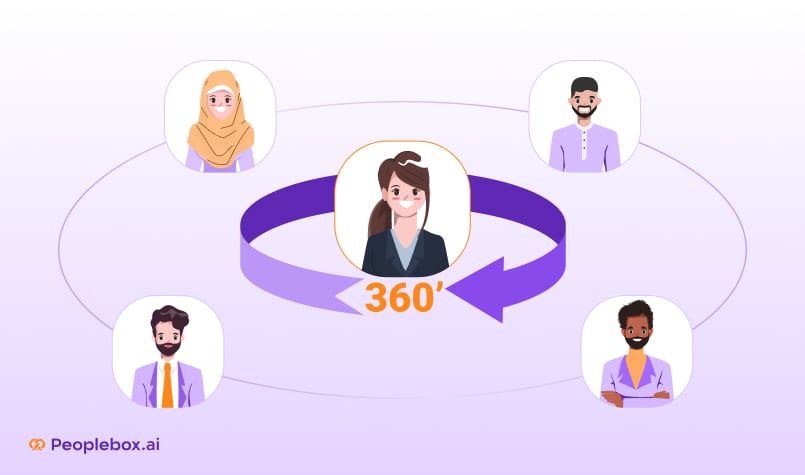Blind Hiring sounds simple enough: what if you couldn’t see a job candidate’s name, age, or gender? Just their skills and experience, plain and simple. Think about it – how many times have we made quick judgments based on someone’s name on a resume, even without meaning to?
It’s like when you’re watching The Voice, and the judges can only hear the singer, not see them. Sometimes the person behind that amazing voice looks nothing like what you expected – and that’s exactly the point.
Are you hitting a wall trying to build a more diverse team? Finding yourself making snap decisions about candidates before even meeting them? Worried you might be letting great people slip through the cracks?
In this blog, we’ll break down how blind hiring actually works (it’s simpler than you think), why more and more companies are jumping on board, and how you can use it to transform your hiring process.
Understanding Blind Hiring
Here’s the thing: companies everywhere are realizing they might be missing out on incredible talent just because they’re stuck in old hiring habits. Maybe it’s passing over someone because their name is hard to pronounce, or assuming a person is too old because they graduated in a certain year, or even favoring candidates from certain schools just because “that’s how it’s always been done.”
Let’s be honest—traditional hiring practices often come with built-in biases, whether we realize it or not. Blind hiring not only removes unconscious biases but also encourages diverse talent to apply, opening doors for individuals who might otherwise be overlooked.
You can make sure hiring decisions are based solely on a candidate’s skills, qualifications, and experience, rather than their characteristics.
It can be implemented in various forms, including using specialized software, anonymizing resumes, and conducting anonymous interviews.
It not only helps to reduce unconscious bias but also improves the overall quality of hires. By ensuring that the best candidates are selected based on their abilities, organizations can foster a more diverse and innovative workplace.
This approach can also enhance the company’s reputation as an inclusive employer, attracting top talent from various backgrounds.
💡The Case of the Boston Symphony Orchestra
The Boston Symphony Orchestra in 1952 noticed that most of its employees were white males. It was then that they decided to try something new. New candidates were brought in and were made to stand behind a blind screen so that the panelists could not see if the candidate was a white man or any other woman.
The panel could see the screen and hear the music.
The symphony was reported to have gotten an ever-high number of female employees that year. This is the power of Blind Hiring.
What are the Biases that Blind Hiring Avoids?
As we saw, Blind Hiring removes unconscious bias from hiring. But what is unconscious bias?
Broadly speaking, unconscious bias is a term that describes any implicit preferences or prejudices that can affect how we judge a person’s skills, abilities, or character. While there are many different types of unconscious bias, they all lead us to make assumptions – be they positive or negative.
Broadly, unconscious biases can be classified into four categories:
- Halo/Horn Effect: When a single good achievement of a candidate overshadows everything else, or even a single negative trait takes over the better qualities.
For example, if the candidate works for a reputed XYZ company, they must be a good fit for our company. - Confirmation Bias: Certain pre-existing beliefs or notions that recruiters have can get in the way of hiring a potentially good candidate.
For Example, A candidate quit his previous job in less than a year, automatically assuming that he is not going to be a good fit. - Affinity Bias: Sometimes, a personal experience (positive or negative) or accounts influence the hiring decision.
For Example, if the candidate hails from the same university/town as the recruiter, he would naturally feel a connection on a personal level and may overlook his skills. - Stereotype Bias: Preferences based on a well-known institution or well-regarded societal norm.
For Example, if a candidate is a graduate of a well-known university, he is automatically preferred to be a good fit. - Social Biases: Differences might sometimes occur based on the gender, age, and racial ethnicity of the employee as well
Why Is This Important to Your Organization?
A recruiter often spends only 6 to 7 seconds on each resume and such biases are psychologically much helpful in making quick decisions. These biases come naturally to every human (and no one is an exception to this). They however affect the quality of hiring.
If you ignore them, these biases can even mold your company’s culture, engagement, and even bottom line. Here are just a few of the benefits of having a diverse team:
- High profits: Organizations with “above-average diversity” have 19% higher revenues.
- Higher productivity: Diverse teams produce 60% more.
- Build trust across your team: Diversity practices are said to have a direct link to the levels of employee engagement, trust, and value.
- Attract great talent. According to a study, over 85% of millennials would prefer to work with a business that acts responsibly and ethically.
It is no surprise that diversity in an organization is the key. Consider implementing the following tricks to help you with blind hiring
How to Implement the Blind Hiring Process?
If you are looking for an easy-to-use guide to tweak your recruitment process to reduce biases, blind hiring is the first step.
1. Blind Resume Screening
Almost all recruiting decisions will involve some form of human-to-human interview. But take a step back in the process, blind screenings may help you to make sure that all candidates are competing on a level playing field.
- Blind resume review: Remove identifiable information like name, address, educational institution, affiliations, etc. Instead focus on the relevant skills, work experience, achievements, and qualifications.
- Avoid Social media: It is very tempting for recruiters and hiring managers to do a quick background check on applicants. Adding social media to one’s hiring criteria may unwittingly introduce certain levels of bias that disavow the very essence of the blind hiring process.
2. Blind Assessment:
A blind assessment can help you evaluate the candidates based on their skills. It can also filter out the relevant candidates from the pool of applicants.
- Skill-based assessment: Undertake skill testing to assess a range of relevant qualities such as aptitude, teamwork, communication skills, or critical thinking. Candidates can be assigned an identifying number or code to retain their anonymity through blind testing.
- Regularise assessment parameters: Ensure a fair grading system where every candidate is marked on the same scale. Implement a scoring rubric outlining the specific criteria for evaluating the responses.
3. Blind Interviews:
Identify the core competencies needed for the job in question. Be clear with what you are looking for in a candidate. Prepare structured interview questions testing these competencies. It ensures a fair chance for every employee.
💡Pro Tip: Use situational and behavioral questions to assess how the candidate might have handled the situation in the past. You can also use chatbots or text-driven interview software to ensure a fair interview process.
How is Blind Hiring Advantageous?
Organizations can benefit in several ways from blind hiring. Here are some ways how blind hiring can elevate your hiring game.
1. Remove Unconscious Biases
The most obvious but effective advantage of blind hiring is that it prevents all the different unconscious biases. A study in 2020 shows that applicants with “white-sounding names” get 50% more callbacks than applicants with Black-sounding names, regardless of identical professional experiences. It ensures every candidate is given a fair chance.
2. Promote Diversity and Inclusion
Blind hiring makes way for people from diverse backgrounds to be a part of the team. Such a team can help you get a broader perspective and improve performance. Sometimes, ideas from a cognitively diverse team can help drive innovation.
3. Higher Retention Rates
Hiring and selection processes based purely on merit maximize the probability of landing one who fits the job. Employees hired through competency approaches are likely to perform successfully in the jobs they were hired for, bringing them job satisfaction while ensuring there is retention. This brings some capital costs and disruptions associated with turnover down.
4. Boosts Employer’s Brand
We have established the fact that blind hiring helps build diverse teams with diverse skills and talents. These teams bring the best ideas to the table that help deal with the needs and perspectives of diverse customers. This helps in employer branding.
The Downside of Blind Hiring
No technique can be deemed perfect. Blind Hiring too has its own set of shortcomings that need to be considered while implementing.
- Blind hiring would be most effective in those areas or positions where specific qualifications and skills largely determine success. In cases where cultural fit and relationships or networking are key factors, blind hiring may miss some of the most crucial things a candidate has to contribute to an organization.
- Sometimes blind hiring can lead to a decrease in hiring diversity. Most organizations target minority candidates while hiring. When recruiters cannot access personal information, they find it difficult to hire a diverse candidate.
- Blind hiring overlooks the need to identify a “cultural” fit between an individual and an organization. This information becomes useful when considering previous organizations with which a candidate has worked, for it can indicate the type of working environment in which the candidate has succeeded.
- Blind hiring places a strong emphasis on skills and technical abilities but does not measure soft skills like communication, teamwork, and leadership. Normally, their output is featured in personal contact with others, whereas such contacts are limited at the beginning by factors that eliminate identifying features.
Best Practices for Implementing Blind Hiring
There are a number of ways you can bring blind hiring processes to your organization. Here are some of the best.
👉Blind Screening Software
Artificial intelligence has emerged to be a very influential and important invention of the 21st century. AI-powered tools can be used by hiring managers to ensure anonymity during the different steps of recruitment.
- AI Resume Screening- Peoplebox: Peoplebox, an AI-powered resume screening for easy hiring, simplifies the hiring process by screening candidates rapidly, automatically filtering unconscious bias, and ranking applicants based on data-driven criteria.
- Application tracking system: You can use various ATS tools like FairHire or AccessPeople HR to remove unconscious biases from the resume.
- Blind Interview platforms: Tools like Sapia.ai can be used to carry out anonymous interviews
- Job description writers: Writers can use tools like Textio or Clovers to craft neutral yet captivating job descriptions.
Suggested Read: AI in Recruiting: Transforming Hiring with Technology in 2024
🎯AI in real life…
The new ‘Prime Minister Internship Scheme’ 2024 launched on 3rd October in India and aims to provide over 1 million internships in 500 companies for individuals without higher exposure to opportunities. Thousands of resumes have become a norm in such a situation. AI resume screening tools have been used to screen through the eligibility criteria and map each candidate to different internships.
The Ultimate Guide to AI in Recruitment
👉 Neutral Job descriptions
Focus more on creating inclusive job descriptions that will captivate the appropriate audience to apply. Avoiding biases in gender and other categories in the job descriptions. Using “he/she” does not give a wrong impression, but “the ideal candidate” will do even better.
Terms that don’t seem biased, like “guys” or a job title like “chairman,” can also communicate a wrong impression. It’s best to limit using them as much as possible.
Racial and age-related words can even slip into job postings without you realizing this and might reduce the number of applicants. Instead of looking for caps on years of experience, talk about your needed skills.
Masculine and feminine words, gender-neutral words included, contained in your job postings must also not be taken for granted. Job postings that convey their wording as gender-neutral bring in as much as 42% more responses.
💡Pro Tip: Try to use the following keywords to ensure a more enticing job description.
1. Collaborative: emphasizes teamwork and partnership
2. Analytical: highlights critical thinking and problem-solving skills
3. Creative: welcomes innovative and unconventional approaches
4. Adaptable: encourages flexibility and willingness to learn
5. Empathetic: recognizes the importance of understanding and considering others
6. Motivated: prioritizes self-initiative and drive
7. Communicative: emphasizes clear and effective communication skills
8. Interpersonal: highlights relationship-building and collaboration skills
9. Solution-oriented: focuses on finding practical solutions to problems
10. Resourceful: values efficient use of resources and ingenuity
11. Strategic: highlights long-term thinking and planning skills
12. Growth-oriented: emphasizes eagerness to learn and develop new skills
13. Data-driven: promotes an evidence-based approach to decision-making
14. Proactive: encourages taking initiative and anticipating needs
15. Open-minded: encourages receptiveness to diverse perspectives and ideas
👉Involve Multiple Reviewers:
Different reviewers can provide many different perspectives in the assessment process. Having multiple reviewers reduces bias as there is collective decision-making, thereby making the whole evaluation process objective for all contenders.
Group decisions are usually well-based. With multiple reviewers, the discussion over different candidates is held in-depth, hence leading to more comprehensive deliberation over the qualifications and potential fit of each candidate within the team.
In fact, even having a team of reviewers increases accountability in the process.
Also read: 10 Reasons Why Accountability is Important in Business for 10X Growth?
👉Focus on Collecting the relevant Data:
At this point, you’re likely wondering what it is, then, that you should base your hiring decisions on. You have to decide what data to gather and how to collect it best.
Pre-employment assessments allow you to aggregate data regarding candidate cognitive aptitudes, personality traits, and behavioral tendencies, even company culture preferences.
The more you allow the candidates to complete assessments in the early phases of the hiring process, the more objective you’ll be with your hiring decisions.
And Thus…
Blind screening has become an essential practice for organizations aiming to eliminate biases and create a diverse workforce. By removing identifiable information, employers can focus more on a candidate’s skills and qualifications.
Obviously, the approach of blind hiring has its benefits. It is still not the single solution for every decision that concerns hiring. Careful analysis of the pros and cons of blind hiring will provide you with the extent to which you want to have blind hiring as a part of your organization in the optimization of your hiring process.
By combining three disparate hiring techniques-blind, referral, and skill-based selection, you can optimize both for best candidate fit and for diversity in your selection processes.
Make sure to give Peoplebox’s AI-powered resume screening a visit!







